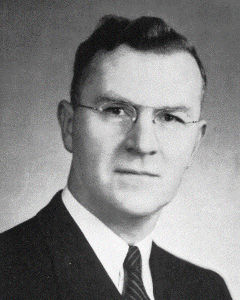September 10th marked the 114th birthday of Waldo Semon, the man who helped introduce more people to music in the last century than any other person despite never picking up an instrument.
Semon is the inventor of the chemical compound polyvinyl chloride, more commonly referred to as vinyl.
When Semon first started experimenting with synthetic rubbers back in 1926, polyvinyl chloride (PVC) existed already, but it was considered useless.¬†Semon’s early efforts to find an adhesive rubber that could be used to coat metal¬†using reclaimed crude rubber failed, so he moved on to synthetic compounds including PVC, which was basically considered worthless. Because this early vinyl was stiff and brittle at room temperature, Semon heated it in a solvent with a high boiling point. The resulting jelly was elastic after cooling, and he realised he was onto something.
Soon, he perfected a process to plasticise the polymer,  a lightweight, durable plastic that could be molded into almost any shape imaginable. The first applications for his invention included shoe soles and wire coatings, and as World War II stretched rubber supplies to their limit, vinyl took off.
The first vinyl records made from vinyl appeared in early 1930s, but they didn’t sell very well. The standard format for records at the time was 78 rpm shellac discs made and no one was in a hurry to replace gramophone turntables.
Vinyl offered advantages over shellac, it was lighter and more durable, not to mention cheaper to produce. PVC could essentially be created from seawater and petroleum.
 After the war, new lightweight pickups and hard, durable styli in turntables made vinyl a practical commercial choice for records. Shellac 78s were in production until the late 1950s competing record formats including 12-inch LPs and 7-inch 45s.
After the war, new lightweight pickups and hard, durable styli in turntables made vinyl a practical commercial choice for records. Shellac 78s were in production until the late 1950s competing record formats including 12-inch LPs and 7-inch 45s.
 The vinyl era ended, when CD sales outstripped vinyl records, however despite its predicted total demise there is still a market for vinyl albums 45s and EPs among collectors and many more new releases are being issued digitally, on CD and on vinyl albums. Long may they continue to do so.
Walso died in 1999 at the age of 100 with 116 patents to his name, four years after he was inducted into the Inventors Hall Of Fame.  

